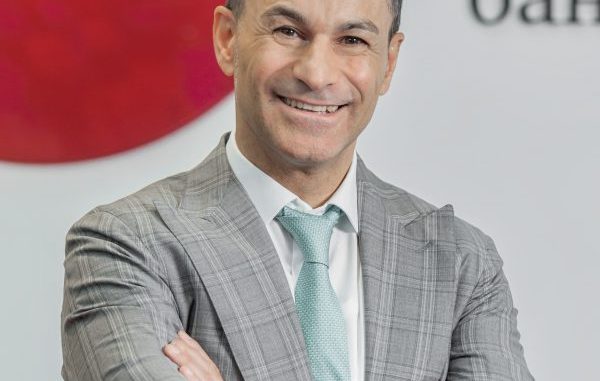
—Why did FUIB enter the financial leasing market?
—The idea of creating a business line for financial leasing came to us at the end of 2017. And in January 2018, we implemented the first agreement. We were able to quickly analyze the market, prepare and defend a business plan for a new direction, form a team and implement leasing in existing banking processes. Prior to that, FUIB had never been engaged in leasing for 28 years, so adapting a new business was not so easy and it is still ongoing. To date, the value of our leasing agreements has exceeded UAH 1.18 billion. The portfolio of new business in 2019 amounted to UAH 690.5 million, and this year we plan to exceed the level of UAH 1 billion.
—And what was the motivation to do leasing?
—We need to develop not only traditional businesses, which are already quite successful in the bank. Therefore, we carefully considered various alternatives and new opportunities for additional profitability, customer engagement and development of financial services. We noted that in the product line of our bank such a direction has never been. The fact that there is almost no leasing in the country became convincing: due to the political and financial crisis in 2013-2015, the market fell from UAH 31.6 billion to UAH 6.3 billion in terms of new contracts, and only in 2016 did a gradual recovery begin. But it was an opportunity to make a rise in the fall, and we took advantage of it, like other players. Previously, leasing was more often provided by specialized companies, but in recent years the largest Ukrainian banks have become interested in this product. In the first nine months of 2019, the volume of new leasing agreements amounted to UAH 18 billion.And we estimate the results of the year at more than UAH 24 billion.
—What market share have you already gained and at the expense of which products?
—As a result of 2019, according to the statistics of the Association of Lessors of Ukraine, our bank entered the top 7 main players in the financial leasing market. Priority leasing items during these two years were wheeled machinery, including trucks and cars, agricultural and specialized machinery and equipment. And the hit of 2019 were railway gondola cars for the transportation of bulk cargo, the demand for which exceeded supply. In the structure of our sales, almost 90% were occupied by railway cars.
—Why did you decide to develop this business in the bank instead of creating a separate leasing company?
—FUIB is interested in selling leasing from its own balance sheet for certain reasons. The first reason is that we have our own financing and client base. The second – an extensive sales network – more than 200 branches across the country. The third is the only system of support and control over the implementation and implementation of the leasing agreement. For a bank in the leasing business, higher margins, lower risks, because the subject of leasing always remains in his possession. Indeed, we previously studied the possibility of creating a separate legal entity, but later abandoned this idea. First, the newly formed company would be associated with the bank, and compliance with the H9 standard would constrain its funding opportunities. Secondly, there was the question of the need for additional investment in the formation of a leasing company. And the third – we needed to create duplicate work units: security service,credit analysis, credit administration, processing, analytics. In such circumstances, we preferred to launch financial leasing on the bank’s platform. In addition, after the split there will be a single regulator for both banks and leasing companies.
—What is the difference between the work of the leasing division of the bank from the credit department?
—We have built a system of interaction and cooperation of structures, which allows us to effectively, quickly and conveniently implement agreements for financial leasing clients. We have two main processes: time to yes, when we, processing the customer’s application, tell him: “Yes, we can fund you and buy equipment for you”, and time to cash, when we provide financial leasing products, receiving equipment from suppliers and transferring it to lessees. Therefore, our secret is simple – it is a synergy with corporate business units, which allows us to effectively implement a mechanism to avoid unhealthy competition within the bank.
—How do you avoid internal competition, because both divisions can work for bonuses and bonuses and offer the client either a loan or a financial lease?
—When a client applies to a bank, he already knows what is more important to him – cost or speed, to have immediately the subject of leasing or financing, and then buy equipment. This is an advanced client, but there are cases when a client comes and says: “I don’t care what it is – a loan or a lease, do it quickly and efficiently.” Then we look at the company’s financial performance. If the company is stable and able to provide quality collateral, can pay advances, and cash flow in the coming years is expected to be good, the credit council can recommend a loan. But if we see that the client has a high debt burden, there are some difficulties in future income and there is a market factor that affects his business, then we offer leasing, because its risks are lower for us.
—What is the currency structure of your leasing business?
—Leasing as a service can be provided in Ukraine only in hryvnia. Financial companies used to have an advantage because they could finance clients from their own balance sheet in relation to the exchange rate. Until 2019, banks did not have such an opportunity due to the need to comply with the standards of the currency position and the peculiarities of accounting for such transactions. We were approached by clients who were interested in foreign currency leasing. Therefore, we proposed to the National Bank to improve certain methods, and last year it changed, in particular, the calculation of the C5 file, which allowed to peg to the currency and fix the exchange rate on the day of sale of financial leasing. And in the event of significant exchange rate fluctuations, customer payments will be transferred. Medium and small agricultural companies with foreign exchange earnings are most interested in this. Last year we launched a currency product and have already implemented the first agreement.
—What to compare the cost, which is more profitable for the client – a loan or a lease?
—Leasing is an alternative, not a competition to bank lending. Average rates in the bank for leasing products are not higher than loan rates. Leasing clients are companies for which it is important to get the necessary leasing items quickly and without unnecessary workload. It is the lessor who buys, insures and maintains the equipment that is leased. Another difference is the lack of collateral.
—How ambitious are your plans for 2020?
—Last year, we concluded most of the agreements with large and medium-sized companies. Why? First of all, due to the significant demand for railway cars from these segments. We also took into account the processing capacity of projects, which is still limited. The average check in 2019 was UAH 19 million. Our plans for 2020-2021 envisage significant sales growth in the segments of small and medium-sized companies. To develop this mass business, we need to increase the number of transactions and reduce the cost of the average check to UAH 1.5 million. Then small businesses will have access to this product. At the same time, the growing demand from small companies creates a basis for automation and scaling of sales in the segment of small and medium-sized businesses. In 2020, we expect significant demand for road construction equipment,implementation of projects in the market of agricultural machinery and equipment, development of medical leasing, demand for renewable energy projects, and possibly financial leasing will appear in shipping. I am convinced that financial leasing has a huge potential for successful development and acceleration of the recovery of the real sector of Ukraine’s economy.
